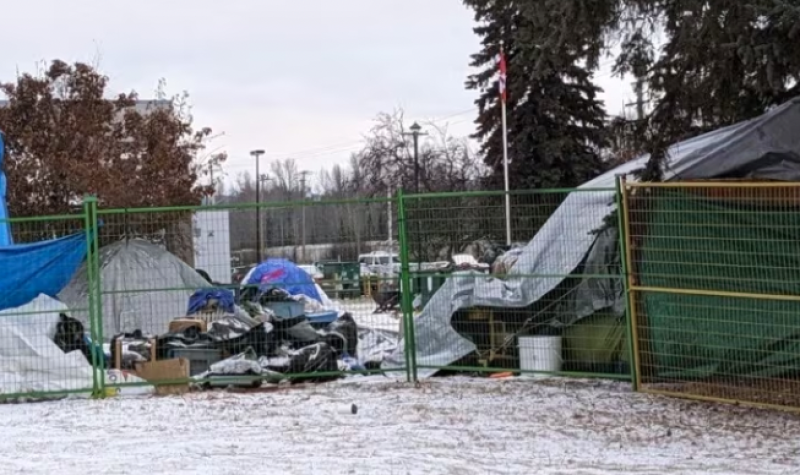Temperatures are dropping across Northwest BC, and tent cities and homeless camp residents are preparing for another long cold winter as municipalities struggle to find a solution.
Earlier this month BC Housing released the latest homelessness data which indicates that rates of homelessness have skyrocketed in the past three years across BC. In northwest BC, many communities are experiencing an exponential increase in those living on the streets.
Smithers has seen the largest increase ever, with the homeless population doubling in the past three years, while Terrace and Prince Rupert aren’t far behind.
There are currently 57 people living without a permanent home in Smithers, most of whom are men. With 53% reporting experience homelessness first as a youth, 36% of those counted said the main reason for being homeless was due to not enough income. Others pointed to substance abuses and conflicts with spouses and landlords. All had some level of health concerns, especially for those (about 94% of them), who have been on the streets for more than a year, half of which live at the encampment near the library.
"There isn't an easy solution to this for any community," said Gladys Atrill, Mayor of Smithers. "At this point the options are limited, but we're going to continue to work with our partners to find a better way forward."
In Terrace, a city of 20,000, around 156 people have been identified as homeless, 36% of which live almost exclusively outside, 13% are youth, with 66% adults and 21% seniors. Of those surveyed, 81% experienced residential schools, or are intergenerational survivors.
In Prince Rupert, 146 people have been identified as homeless, about a quarter of that, 36 people, are under the age of 25. More than half of all respondents cited addictions as their highest health concern.
Although every community is trying to deal with the situation differently, limited resources for new social or supported housing developments means municipalities are hamstrung with what they can do to house everyone who needs it, especially as we head into winter.
Listen to the full episode below:


